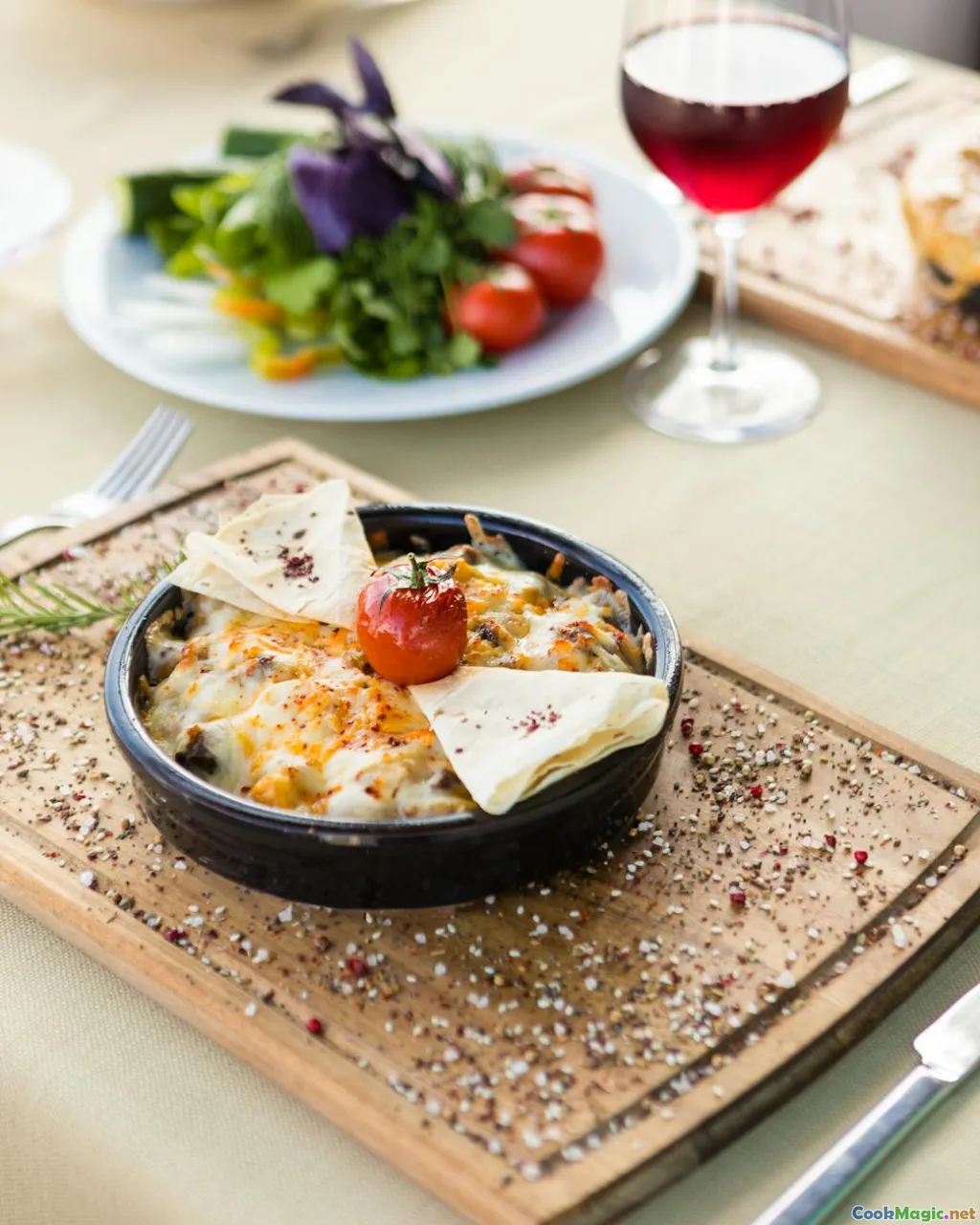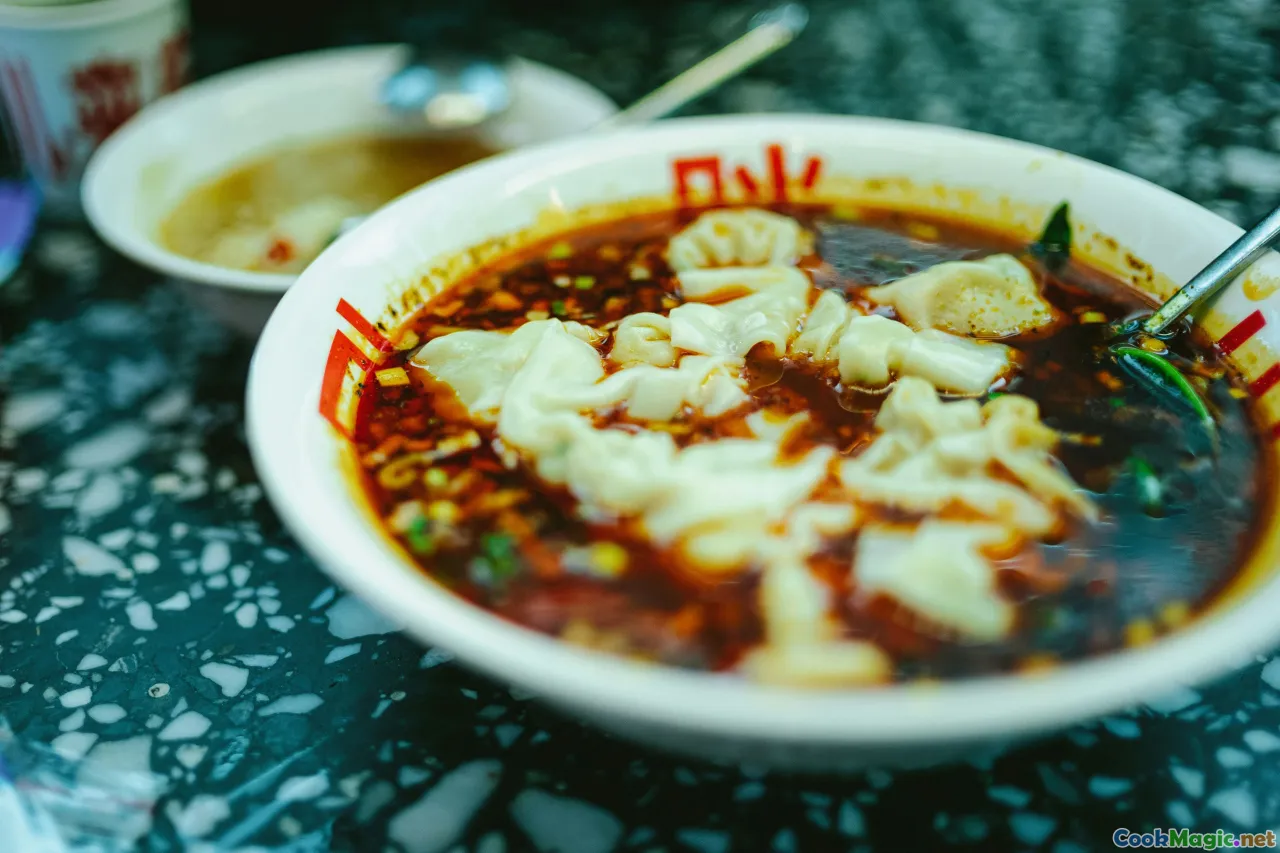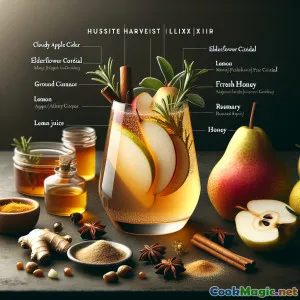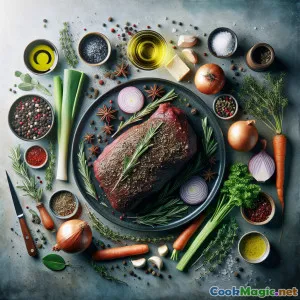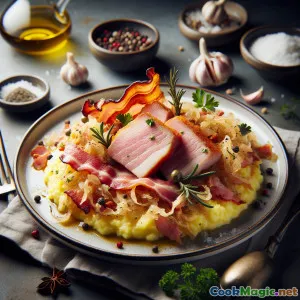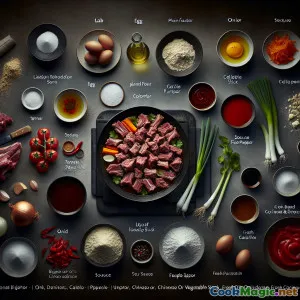
Lagman ao Estilo Inglês Sành Điệu với Cordeiro e Mì Nhà Làm
(Hearty English-Style Lagman with Lamb and Hand-pulled Noodles)
(0 Avaliações)0
1,054
julho 15, 2025
Reportar um problema
Ingredientes
-
400 grams Paleta de cordeiro
(Corte em cubos de 2cm; carne bovina pode ser substituída)
-
300 grams farinha de trigo comum
(Para macarrão; farinha de pão também funciona)
-
1 large Ovo
(Enriquecer o macarrão)
-
120 ml Água
(Ajuste conforme necessário para o macarrão, mais para o caldo)
-
2 tsp Sal
(Dividido, para macarrão e tempero)
-
1 large Cebola
(Finamente picado)
-
3 cloves Alho
(Picado)
-
1 medium Cenoura
(Em cubos)
-
1 whole Talo de aipo
(Finamente picado)
-
1 medium Pimentão vermelho
(Em cubos)
-
2 tbsp Purê de tomate
(Para profundidade e cor)
-
1 tbsp Molho de soja
(Por umami)
-
0.5 tsp Páprica chinesa de cinco especiarias
(Uma homenagem às especiarias da Rota da Seda)
-
2 tbsp Óleo vegetal
(Para dourar e refogar)
-
1 liter Caldo de carne ou vegetal
(Preferido caseiro)
-
1 small bunch Coentro Fresco
(Picado, para enfeitar)
-
2 whole Cebolinha
(Picado para guarnição)
(Corte em cubos de 2cm; carne bovina pode ser substituída)
(Para macarrão; farinha de pão também funciona)
(Enriquecer o macarrão)
(Ajuste conforme necessário para o macarrão, mais para o caldo)
(Dividido, para macarrão e tempero)
(Finamente picado)
(Picado)
(Em cubos)
(Finamente picado)
(Em cubos)
(Para profundidade e cor)
(Por umami)
(Uma homenagem às especiarias da Rota da Seda)
(Para dourar e refogar)
(Preferido caseiro)
(Picado, para enfeitar)
(Picado para guarnição)
Nutrição
- Porções: 4
- Tamanho da Porção: Uma tigela funda (400g)
- Calories: 670 kcal
- Carbohydrates: 0 g
- Protein: 29 g
- Fat: 27 g
- Fiber: 6 g
- Sugar: 8 g
- Sodium: 1450 mg
- Cholesterol: 75 mg
- Calcium: 86 mg
- Iron: 4.2 mg
Instruções
-
1 - Preparar a Massa de Macarrão Estendido à Mão:
Em uma tigela grande, combine farinha, 1 colher de chá de sal e ovo (se usar). Adicione água gradualmente até formar uma massa firme, mas ligeiramente elástica. Sove por cerca de 10 minutos até ficar lisa. Cubra com filme plástico e deixe descansar por 30 minutos.
-
2 - Cozinhe a perna de cordeiro e prepare a base da sopa:
Enquanto isso, aqueça óleo vegetal em uma panela de fundo pesado. Adicione a carne de cordeiro; frite até dourar de todos os lados. Adicione cebola e alho; refogue até ficarem macios. Acrescente cenoura, aipo e pimentão vermelho, cozinhando por mais 3–4 minutos.
-
3 - Adicionar tomate e especiarias:
Misture o purê de tomate, molho de soja, cinco especiarias (se usar), e 1 colher de chá de sal. Cozinhe até ficar levemente caramelizado.
-
4 - Cozinhar a sopa lentamente:
Adicione o caldo, leve a ferver e depois reduza para uma fervura branda. Tampe e deixe a sopa cozinhar por 40 minutos, até que a carne de cordeiro esteja macia e os sabores se misturem. Retire a gordura conforme necessário.
-
5 - Modelar e Cozinhar o Macarrão:
Enquanto a sopa ferve, divida a massa em quatro pequenas bolas. Com as mãos untadas com óleo, enrole cada uma em uma corda longa. Estique gradualmente, pulando e puxando suavemente, depois coloque em uma panela com água salgada fervente. Cozinhe por 3–4 minutos até que os noodles flutuem; escorra, enxágue brevemente com água fria e reserve.
-
6 - Montar e Servir:
Divida os macarrões cozidos entre tigelas profundas. Sirva a sopa de cordeiro quente com muitos vegetais chunky por cima. Decore com coentro picado e cebolinha.
Em uma tigela grande, combine farinha, 1 colher de chá de sal e ovo (se usar). Adicione água gradualmente até formar uma massa firme, mas ligeiramente elástica. Sove por cerca de 10 minutos até ficar lisa. Cubra com filme plástico e deixe descansar por 30 minutos.
Enquanto isso, aqueça óleo vegetal em uma panela de fundo pesado. Adicione a carne de cordeiro; frite até dourar de todos os lados. Adicione cebola e alho; refogue até ficarem macios. Acrescente cenoura, aipo e pimentão vermelho, cozinhando por mais 3–4 minutos.
Misture o purê de tomate, molho de soja, cinco especiarias (se usar), e 1 colher de chá de sal. Cozinhe até ficar levemente caramelizado.
Adicione o caldo, leve a ferver e depois reduza para uma fervura branda. Tampe e deixe a sopa cozinhar por 40 minutos, até que a carne de cordeiro esteja macia e os sabores se misturem. Retire a gordura conforme necessário.
Enquanto a sopa ferve, divida a massa em quatro pequenas bolas. Com as mãos untadas com óleo, enrole cada uma em uma corda longa. Estique gradualmente, pulando e puxando suavemente, depois coloque em uma panela com água salgada fervente. Cozinhe por 3–4 minutos até que os noodles flutuem; escorra, enxágue brevemente com água fria e reserve.
Divida os macarrões cozidos entre tigelas profundas. Sirva a sopa de cordeiro quente com muitos vegetais chunky por cima. Decore com coentro picado e cebolinha.
Mais sobre: Lagman ao Estilo Inglês Sành Điệu với Cordeiro e Mì Nhà Làm
About Lagman: An English Interpretation
Lagman is a soul-satisfying noodle soup with deep, multicultural roots influenced by the Silk Road trade, where spices, culinary ideas, and people freely mixed. Traditionally hailing from Central Asia—most notably Uzbekistan, Kazakhstan, and Xinjiang in China—lagman is remarkable for its chewy, hand-pulled noodles bathed in a savory, tangy broth typically brimming with lamb and distinctly spiced vegetables. My adaptation brings a refined English touch to this age-old recipe while also paying homage to its heritage.
The Fascination of Lagman
At its core, lagman embodies resilience and creativity: the hand-pulled noodles require both strength and patience, symbolizing the care people invest in feeding families. The dish is robust, nutritious, and deeply restorative, beloved throughout Eurasia because it’s so endlessly adaptable. Traditional lagman can contain whatever is ripe on the farm or available in markets: lamb, beef, even chicken; chunky carrots, juicy bell peppers, crunchy celery; tomatoes for tang and depth; and always fresh herbs to finish.
About This Unique Fusion
My "English-Style Lagman" keeps the dish’s signature elements—yankable wheat noodles and stewed lamb—but offers a fresh approach for UK kitchens. I’ve blended classical English stew techniques with Central Asian ingredients. The lamb is browned for rich flavour—a nod to English roasts—then subsumed in aromatic broth pumped up with soy and, optionally, Chinese five-spice (honouring lagman’s migration via the Silk Road). Tomato purée intensifies the soup and brings comfortingly familiar umami notes a British palate will find friendly.
For the noodles, I aim for a tender bite by using plain flour enriched (if desired) with egg—something rarely found east of the Caspian, but closer to traditional British fresh egg noodles. Oiling your hands before pulling and stretching them welcomes even novice cooks—though perfection comes with practice, and wobbly noodles taste just as magnificent!
Tips & Notes
- Noodle-Making Can Be Fun Family Time: The hand-pulling process is tactile and laughs are guaranteed, so invite helpers.
- Down to the Last Sip: The true heart of lagman lies in its broth: deep, warming, and cozy; taste and adjust salt and spices to perfection.
- Substitutions Work: Use beef or plant-based protein in place of lamb; replace fresh coriander with parsley if preferred.
Cultural Importance
No food represents multicultural exchange quite like lagman—rarely is one recipe held as correct. On icy roads from Xinjiang to London’s East End, in tidy English towns, to the stalls of Uyghur bazaars, the hearty, chewy texture of lagman noodles seems to whisper stories of migration, hospitality, and care. Every bowl celebrates the confluence of worlds—where England’s love of stews melds seamlessly with traditions from far further east.
Unique Aspects
What sets this recipe apart is its playful intersection of precision (the English culinary spirit, measure and moderation) and adventure (the joy of noodle-pulling, flashes of soy and spice). With hand-pulled noodles, there’s always an element of pride and a sense of accomplishment in transforming the simplest flour and water into culinary artistry.
Personal Thoughts
Lagman in this context is not just food—it’s an invitation. The act of sharing deep bowls, letting fragrant clouds rise with each ladleful, speaking of winter glum chased away, is warming in every way imaginable. If you’ve never made your own noodles before, consider this permission to try. You'll discover it's not perfection, but participation—and communal joy—that makes for treasured memories and deeply good cooking.

